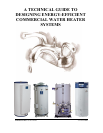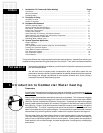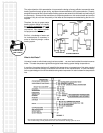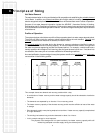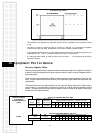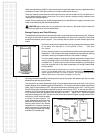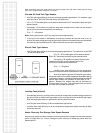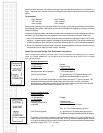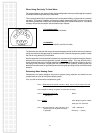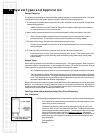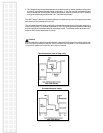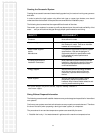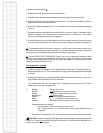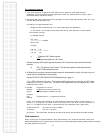
11
IV. System Types and Application
Design Objective
The objectives in the design of commercial water heating systems are numerous and varied. The major
considerations which the system designer should include in the planning stages are:
1. The heater and related system components and their installation must comply with all applicable
codes and requirements.
• ASME construction and NSF (National Sanitation Foundation) labelling are two examples
of requirements which may have to be met.
2. Water heating system performance must promote the health, welfare and safety of the public.
• Often times exact water temperatures over a long period of time are required in order to
provide sanitation. This quality must be built into the system in the design stages.
3. Efficiently utilize energy to achieve the least possible operating costs.
• Electricity is an example of a fuel which must be applied thoughtfully to avoid unnecessary
demand charges.
4. Provide the quality and features needed to attain the desired results at least cost.
• Least cost means not only initial cost but operating costs as well. Often times higher initial
cost can be offset by lower operating costs achieved by using State energy-saving water
heater models.
System Types
Water heating systems may be divided into two basic types. The types depicted in State instruction
manuals are either one temperature or two temperature systems. Of course the customer, through
fixture adjustment, may obtain a variety of temperatures to serve their needs.
• One Temperature systems produce only one temperature of hot water to satisfy the demand.
• Two Temperature systems produce two temperatures of hot water and are usually associated
with food service functions. The higher temperature water is used for dishwasher sanitizing
rinse. Two temperatures may be produced by a single water heater with a mixing valve or by
two water heaters set at two different temperatures.
Within each division are numerous system names which should be understood and used by the system
designer. It is important to correctly identify a system so the plumber and electrician will follow the
proper instructions and diagrams. The following describes the system nomenclature used by State as
it applies to the various types of heaters and fuels in use.
Tank Type Water Heater Systems Using Gas, Oil And Electricity.
One Temperature
1. One Temperature and Booster are the names of one temperature water heating system.
• One Temperature implies that the one temperature hot water produced in the
heater is for general purpose use.
• Traditionally, a Booster system receives hot water (usually at 140°F) and
raises it to 180°F for use in the dishwasher final rinse. The Booster is therefore
a one temperature water heating system. The tank type heater is the proper
choice for a Booster system serving a
stationary rack type dishwasher
because of their intermittent use of 180°F final rinse water. A combination of
heater recovery and storage tank capacity is the rule for a stationary rack
type dishwasher.
• One-temperature
• Booster.



